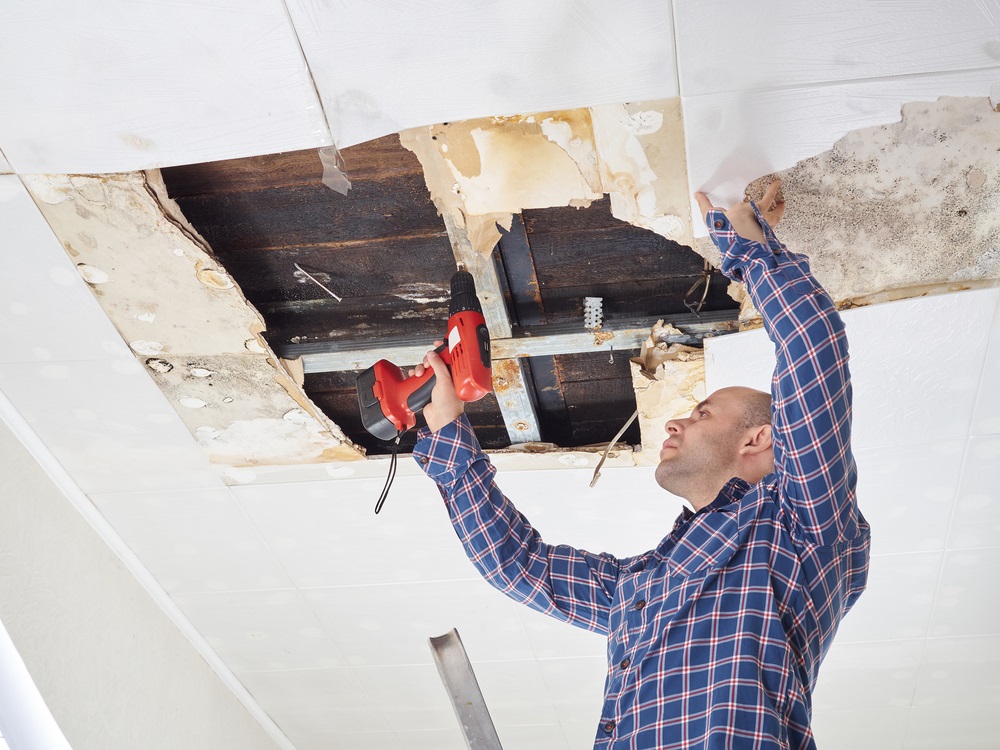Exploring The Connection Between Water Damage And Health Issues

Water damage in homes and buildings is not just a matter of property damage; it can also have serious implications for human health. Whether it’s from a burst pipe, flooding, or a leaky roof, water damage can create an environment ripe for the growth of mold, bacteria, and other harmful microorganisms. In this article, we’ll delve into the connection between water damage and health issues, highlighting the potential risks and how they can impact individuals and families.
The Health Risks Of Mold And Mildew
In terms of water damage and the possible health risks it presents, the growth of mold and mildew is a key cause for concern. Mold spores can swiftly overrun a home’s walls, ceilings, carpets, and furnishings when humidity is high. In people who are allergic to mold, being exposed to it might cause symptoms including stuffy nose, itchy skin, coughing, and sneezing. Mold can worsen the symptoms of asthma and other respiratory disorders and could cause serious respiratory difficulties in some people.
In addition, mycotoxins are poisonous compounds that can be hazardous to human health and are produced by specific varieties of mold. Respiratory troubles, neurological symptoms, immune system abnormalities, and cancer are just some of the health problems that have been associated with long-term exposure to mycotoxins. The harmful impacts of mold exposure are more pronounced in people with compromised immune systems, infants, children, and the elderly.
Bacterial Contamination
Bacterial contamination is another consequence of water damage in the house, right alongside mold. Pathogenic bacteria including E. coli, Salmonella, and Legionella can thrive in stagnant water, sewage backups, and floodwaters. Infections of the digestive tract, skin, and lungs can result from coming into contact with these microorganisms. In severe cases, certain bacteria can lead to life-threatening conditions, especially in individuals with compromised immune systems. It’s crucial to address bacterial contamination promptly, which often requires professional intervention from a reputable water restoration company.
Indoor Air Quality
Indoor air quality also plays a significant role in the link between water damage and health problems. Drywall, insulation, and carpets are all susceptible to the growth of microbes when water seeps into them. The indoor air supply can get contaminated with mold and bacteria as they multiply, releasing spores and poisons into the air. Inadequate air quality within buildings can worsen preexisting respiratory disorders, set off allergic responses, and lead to the onset of respiratory infections.
Respiratory Problems
Individuals living in water-damaged homes may experience a higher incidence of respiratory problems, including asthma, bronchitis, and pneumonia. The respiratory tract might become inflamed, coughed, wheezing, and even hard to breathe if exposed to mold spores, germs, or other airborne pollutants. People already suffering from respiratory issues may find that prolonged exposure to indoor air pollution exacerbates their symptoms and reduces their lung function.
Long-Term Health Effects
Individuals exposed to polluted settings may experience both short-term and long-term health impacts as a result of water damage. Respiratory infections, allergy illnesses, and other long-term health problems are more likely to occur in people who are exposed to mold, germs, and other indoor pollutants regularly. Furthermore, research suggests that prolonged exposure to indoor air pollutants may contribute to the development of cardiovascular disease, cognitive impairment, and autoimmune disorders.
Vulnerable Populations
Some groups are more likely to be negatively affected by water damage in terms of their health. In particular, mold and indoor air pollution can harm very young children, pregnant women, the aged, and those with preexisting medical issues. Early life exposure to germs and mold increases the risk of asthma and allergies in children. Mold during pregnancy may raise the chance of adverse outcomes for the developing baby, including premature delivery and low birth weight.
Prevention And Mitigation
Preventing water damage and addressing it promptly when it occurs is essential for safeguarding both property and health. Regular maintenance of plumbing systems, roof inspection, and proper ventilation can help prevent water intrusion and minimize the risk of mold growth. In the event of water damage, prompt cleanup and restoration are critical to preventing further damage and mitigating health risks.
Conclusion
The connection between water damage and health issues is undeniable. Mold, bacteria, and other indoor pollutants associated with water damage can have serious implications for respiratory health, immune function, and overall well-being. Recognizing the signs of water damage, addressing it promptly, and taking measures to prevent its recurrence are crucial steps in protecting both property and health. Homeowners and their families can protect themselves and their loved ones from the dangers of water damage by learning about the dangers and then adopting preventative actions.






